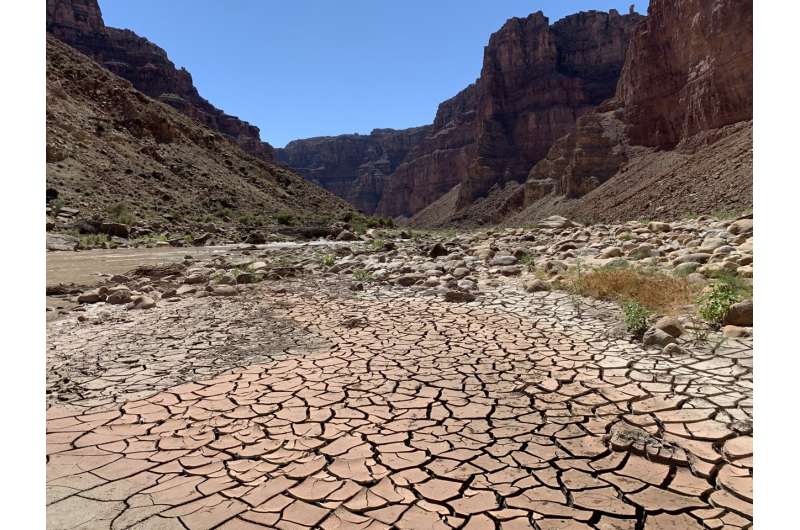What will it take to stabilize the Colorado River?

Lakes Powell and Mead, the two major reservoirs fed by the Colorado River, reached record lows this year nearing 25% capacity. An ongoing megadrought, impacts from climate change and systematic overuse have created a deep management crisis. Although there is growing public acknowledgement that cuts in consumptive use are inevitable and that policy changes are needed, renegotiation of the rules governing this critical shared river are fraught with complexity and impeded by competing priorities between states.
In a new policy forum commentary in the journal Science, researchers from the Center for Colorado River Studies at Utah State University, Colorado State University, and the University of Oxford describe the political history leading up to the current management crisis and offer results from innovative research with a new perspective on what is needed to stabilize or reverse the decline of reservoir storage.
Using the Colorado River Simulation System, the researchers developed a method to quantify the magnitude of consumptive use cuts necessary to balance the system if the current drought continues and to estimate future reservoir storage under various management options. The research identifies combinations of Upper Basin consumptive use limitations and Lower Basin reductions to maintain reservoir storage levels sufficient to maintain secure water supplies if drought persists.
A continuation of the current 23-year-long drought will require difficult management decisions. Implementing, or even accelerating, the policy changes necessary to stabilize the Colorado River system requires well-grounded insight to project the impacts of those policies on the system as a whole, say the authors. The system can be stabilized under specific runoff conditions, but a critical change needed is triggering reductions in use based on the combined storage of Lake Mead and Lake Powell.
"Although the focus of our study is a scenario of continued drought, the insights and approaches found in this piece can be adapted to plan for other future scenarios," said Kevin Wheeler, lead author on the commentary.
The research shows that current policies can't stabilize the Colorado River if the drought continues; however, there are various consumptive use strategies that could—if these strategies are applied swiftly. Although the proposed reductions in consumptive use being considered by Upper and Lower Basin states may seem like a political impossibility at present, they will become inevitable if hydrologic conditions persist, said Wheeler.
More information: Kevin G. Wheeler, What will it take to stabilize the Colorado River?, Science (2022). DOI: 10.1126/science.abo4452. www.science.org/doi/10.1126/science.abo4452
Journal information: Science
Provided by Utah State University




















